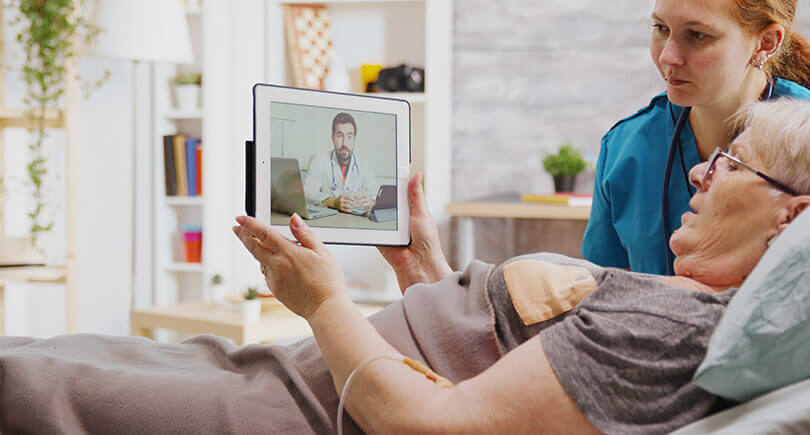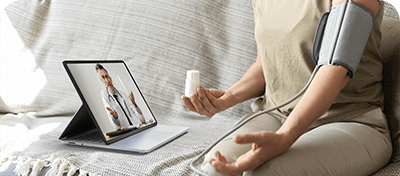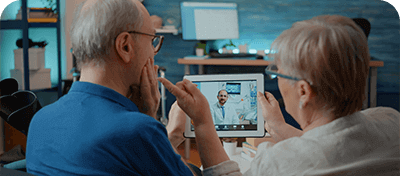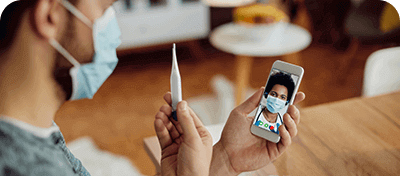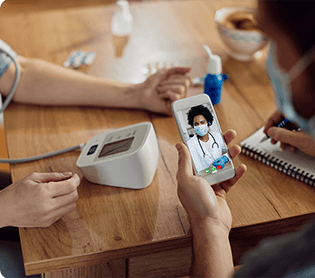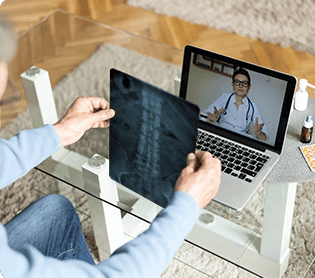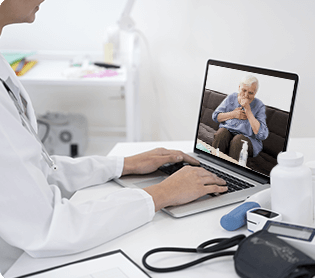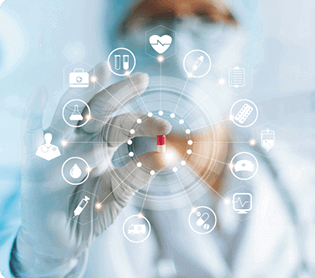Table of Contents
Chronic Care Management involves all the activities that go into providing care for people suffering from chronic diseases. It is a comprehensive approach to care involving medications, health check-ups, monitoring, treatments, and educating the patients. A chronic disease, unlike other diseases, is persistent or long-lasting and could develop over some time. They cannot be cured but only managed.
Managing chronic diseases requires a multi-pronged approach that involves frequent consultations, follow-ups, medications, treatments, and other activities for a healthier life. Needless to point out, treating such types of illnesses is difficult and often requires cooperation and coordination among multiple providers and patients regularly. For people living far away from urban centers, receiving such a level of care is next to impossible. For them, remote patient monitoring for chronic disease management (RPM CCM) can provide this kind of care.
As the name would indicate, remote patient monitoring for chronic diseases or RPM CCM leverages all the technological benefits of remote patient monitoring (RPM) for chronic care management. We will try to understand the role of remote patient monitoring systems in treating chronic diseases.
First, let’s begin by understanding some basics –
What is Chronic Care Management?
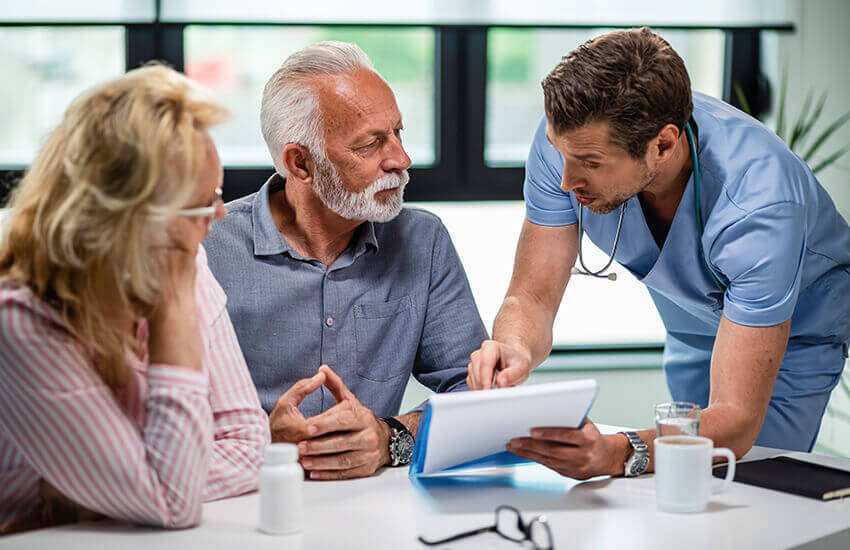
A disease or a physical condition can be classified as chronic if it lasts a year or more, requires continuous ongoing care, and inhibits the person’s everyday life. Examples include diabetes, heart disease, and cancer. Additionally, it could also include mental health problems like depression. CCM (chronic care management) includes extensive in-person consultations and several activities to boost patient health.
It begins with setting goals and organizing a team of providers to coordinate multiple care services toward that goal. Subsequently, the patients have explained the whole plan and all the steps involved in it. This helps the patients be more involved in their care journey and stay abreast of developments. Assembling the patients’ health data is vital to the CCM management process. The records contain information like medication history, allergies, immunizations, previous admissions and treatments, past doctors, etc.
The care process involves tests, check-ups, and follow-ups and entails a member of the care team continuously contacting the patient. The patient is more involved in such a CCM management program than in a conventional treatment course. The providers’ team carefully periodically tracks the progress with repeated tests and various medications if necessary. Patient engagement at each process phase creates a strong rapport between the patient and the providers.
The patients have 24/7 access their care plan and can connect with their providers for clarification. This encourages them to take their recovery more seriously and have greater involvement throughout the process.
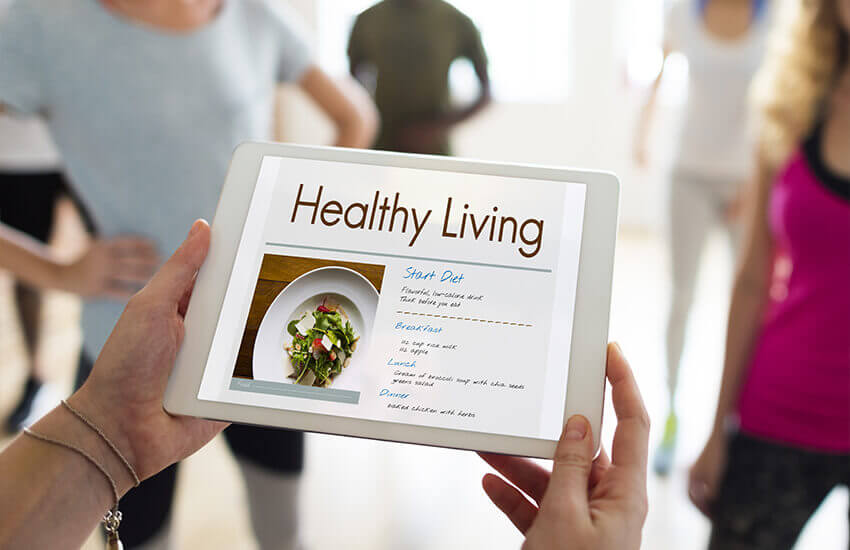
In addition to medication and tests, the team of providers coordinating the care program would help the patients with their lifestyles. A person’s lifestyle plays a major role in their well-being. For patients with chronic diseases, this is even more applicable. A chronic care management app would enable providers to help patients lead healthier lifestyles to improve clinical outcomes. Patients can be advised to an appropriate diet, exercise, and abstain from alcohol and smoking.
The team of providers coordinating the chronic care management program would consist of specialists, dieticians, nutritionists, physical therapists, and others whose expertise would be relevant. Such a team could take a multi-pronged approach to care for the patients based on their diagnosis and severity. The days of a patient consulting with a doctor one-on-one and just taking their meds are over. A coordinated program to manage chronic conditions is more effective in improving patient outcomes.
Unlike physical injuries or conventional infections, chronic diseases cannot be cured. They are physical conditions that develop over time and change functioning inside the body. These diseases can only be managed, and their severity is kept low. Medications can only go so far in helping. What’s important is an overall lifestyle change, diet, regular medications, and health check-ups. Until medical science finds a cure, diligent management is the best way to tackle chronic diseases.
What is Remote Patient Monitoring?
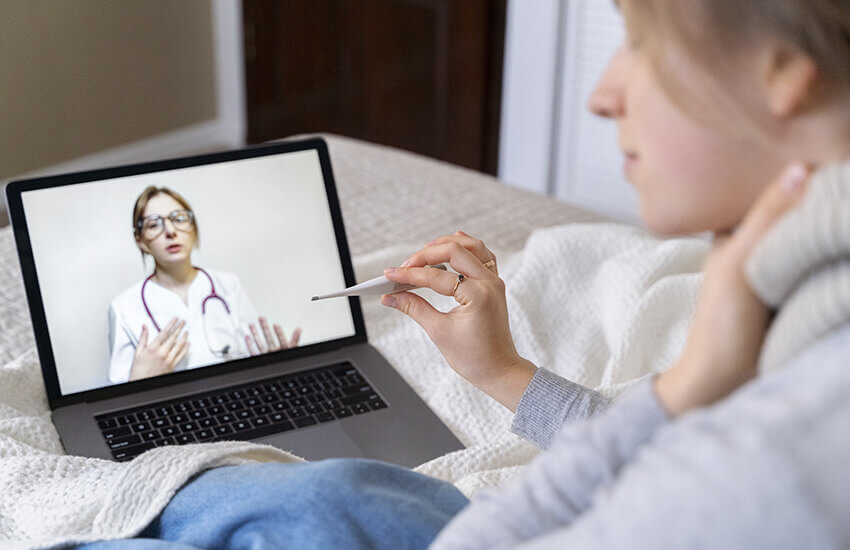
As the name indicates, remote patient monitoring is patients’ clinical observation outside conventional medical settings. Remote care management uses digital and telecommunication technologies to allow physicians to monitor their patient’s health vitals remotely. It mainly applies to people who need not be admitted to a clinic or hospital but need medical attention.
Several devices facilitate wireless patient monitoring. They collect patient vitals in real-time and transmit them to a physician remotely. These vitals could include blood pressure, electrocardiogram, heart rate, glucose level, etc. Observing these vitals over time and using medical informatics delivers insights into patient health. Moreover, this information can then be stored in EHR systems for future reference.
While remote monitoring in healthcare is not new, it took a global pandemic to propel it into a tangible technology. It enabled providers to monitor patients’ health without even being in the same building. Thanks to broader telehealth solutions or remote patient monitoring for home health, people could access medical services without traveling to a clinic. This was highly beneficial to people in rural locations, as they didn’t need to travel far for specialist care.
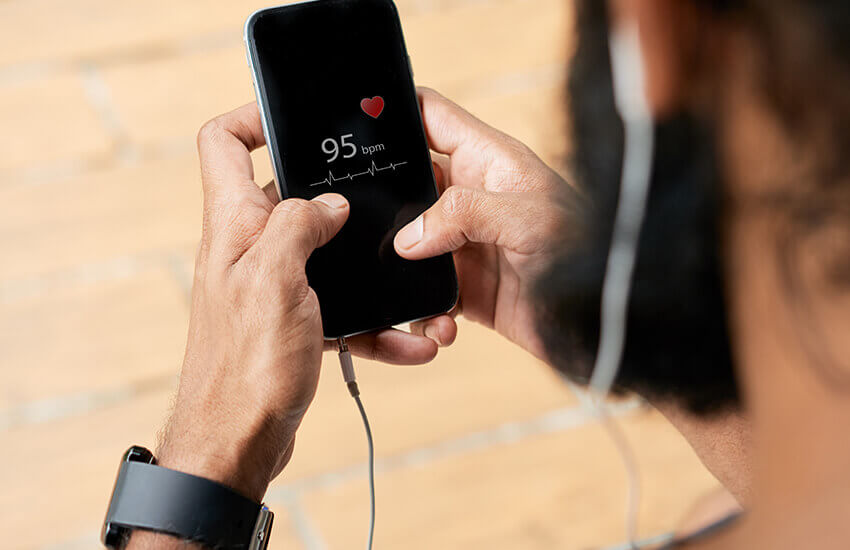
Advances in IoT were a boon for remote patient monitoring and wearable devices as more people could leverage remote care. This was especially helpful for people suffering from chronic conditions as they could connect with physicians better and manage their conditions. Following the pandemic, remote patient monitoring for chronic care management (RPM CCM) became a buzzword in healthcare. Since tens of millions of Americans suffer from at least one chronic disease, it has become necessary to make healthcare more efficient and alleviate this medical crisis. This is where remote patient monitoring solutions became popular among providers and patients.
Remote Patient Monitoring for Chronic Care Management
Chronic care management and remote patient monitoring are two types of medical services. While the first has been around for some years, the latter gained popularity following the Covid-19 pandemic. In this section, we will explore both in detail and elaborate on their features and benefits while knowing which is applicable in what situation.
RPM, or remote patient monitoring, is also called remote health or healthcare monitoring. As the name indicates, it involves monitoring a patient’s health remotely outside conventional clinical settings. RPM is possible through devices that collect patients’ health data in real-time and transmit it to physicians in remote locations. The best thing about this is that the doctor and patient must be in a different city. Furthermore, a remote patient monitoring system can allow one doctor to monitor multiple patients remotely, making up for a shortage of doctors.
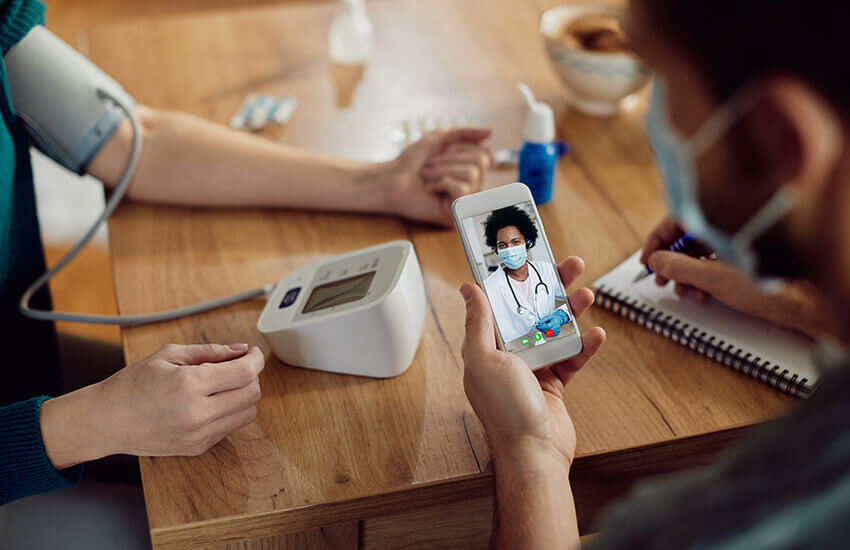
The biggest advantage of RPM is the extension of care services to people who might struggle to access medical services. These could be seniors living in retirement communities or assisted living facilities and people in rural locations. People care to wear medical gadgets to collect health vitals and share the same with providers over the internet. For patients not living at distant locations, RPM technology reduces the need for clinical visits and eventually helps to bring down the overall cost of care in the long run.
On the other hand, chronic care management is an elaborate program to manage the care of people suffering from chronic diseases. This is because these diseases don’t have a cure and often last for a long time. So, care for chronic diseases is an elaborate process that requires medications, frequent consultations, check-ups, follow-ups, and lifestyle changes. Needless to point out, such a care program is conducted by a group of physicians rather than by a group coordinating frequently.
Chronic ailments cannot be solved just by taking medications frequently. They are difficult by nature and require comprehensive care that takes place over some time. Since these diseases have become a health crisis in the United States, chronic care management has become vital for saving lives.
Although their goals are similarly aligned, there are marked differences between RPM and CCM. RPM monitors patients’ health remotely and works best for people taking their medications. It enables these patients to ensure that they are sticking to their treatments. CCM provides patients with continuous support and medical services since they need regular support and guidance to manage their diseases. RPM can work for anybody, whether or not they suffer from a chronic illness.
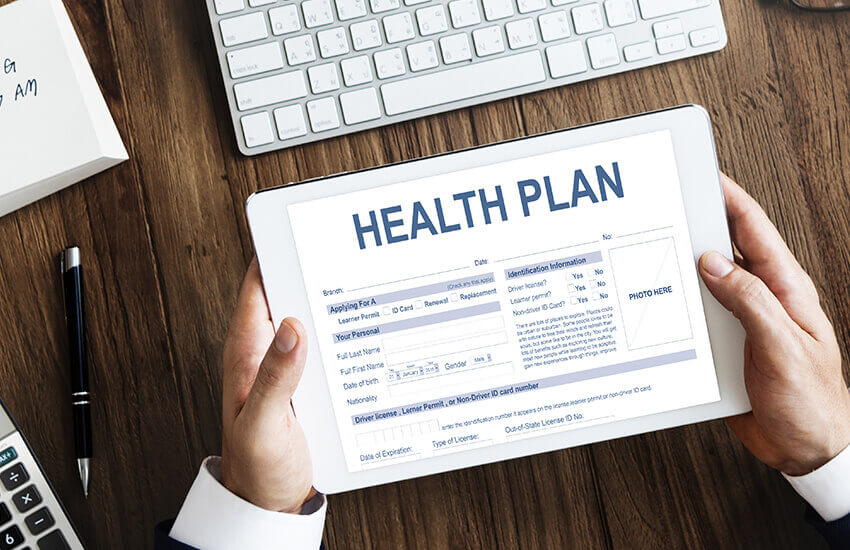
The care plan in the case of CCM depends on the kind of chronic disease and other factors like patients’ health history, the severity of the disease, age, and so on. Combining RPM and CCM for particular cases is not at all implausible. Remote patient monitoring for chronic disease management (RPM CCM) has helped many people suffering from these ailments to receive the care they need. RPM CCM has been extremely beneficial for people living in distant rural locations and suffering from chronic illnesses to lead healthier lives and manage their conditions well.
So, both RPM and CCM are approaches to care. While the former arose and became popular during the pandemic, the latter was created to help handle chronic diseases better. RPM helps physicians observe patients remotely, while CCM improves the outcomes for certain illnesses. RPM is more generalized as it can be applied in the case of most diseases, while CCM can only work for specific ones. Best of all, despite their difference, RPM can help extend the outreach of CCM programs and enable more people to access them.
Examples of Chronic Care Management for RPM
Chronic diseases must be managed, and using RPM has enabled better management. This is because physicians can track patient vitals regularly and in real-time without the patients having to come over physically. This makes it easier for them to handle chronic cases and more convenient for the patients. This section will examine some real-life examples of chronic care management with remote patient monitoring (CCM RPM).
Virtual care through RPM monitoring devices emerged after the pandemic to become an important part of healthcare. It allowed better monitoring of patients with fewer in-person visits necessary. This led to the market growth for remote patient monitoring software and a broader acceptance of the technology in chronic care management.
Let’s have a look at some examples of where chronic diseases can be better managed with RPM devices –
High-Blood Pressure
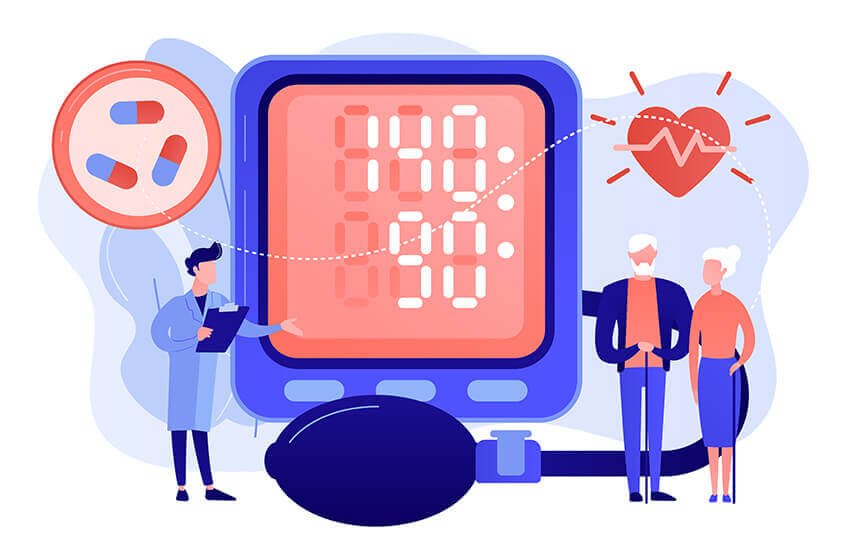
High blood pressure, also called hypertension, is a condition in which the force of blood pushing against the inner walls of arteries is persistently high. In such cases, the heart must work harder to pump blood throughout the body. If left unchecked, high blood pressure increases the risk of heart failure, stroke, loss of vision, and kidney disease, among others.
High blood pressure develops gradually over time due to unhealthy lifestyle choices. These can include smoking, alcohol consumption, obesity, and a diet high in salt. Additionally, mental health too plays a role in worsening this condition. High-stress levels over a continuous period are known to increase blood pressure.
RPM care management programs have demonstrated promising results in helping improve patients’ blood pressure. In this, a patient will be placed under observation for hypertension, and their blood pressure will be regularly monitored through a device like a blood pressure cuff. The results will be shared with the team of treating doctors. Based on the result from the device, the doctors will recommend an appropriate course of treatment which might include a combination of medications, dietary advice, and exercise routines. A team of providers with relevant specializations will monitor this entire course of treatment.
The patient will follow the doctors’ advice and stick to the prescribed activities. Subsequently, their blood pressure will again be measured after a period to monitor progress. Depending on the progress made, chronic care management (CCM) will be modified to suit the patient’s requirements.
In addition to the treatment mentioned above, there could also be regular sessions with a therapist for counseling. This will help the patient deal with their mental health situation (if any) and manage stress better. Mental health is a major factor in overall well-being, and hypertension is one of the outcomes of stress. In this way, remote patient monitoring and chronic care management can be combined for positive patient outcomes.
The remote monitoring capabilities facilitated by RPM devices enable this type of care to be available to people living in distant locations. They only need to travel a little to get the best quality care.
Diabetes

Diabetes refers to a group of diseases characterized by continuous high blood sugar. It can be due to the pancreas not producing enough insulin or the body’s cells not responding sufficiently to the insulin produced. It is one of the most common chronic diseases, leading to several health complications if left unchecked. Research estimates that diabetes claims about 1.5 million lives every year.
Remote patient monitoring for diabetes involves using a glucose monitor to measure their blood sugar levels regularly. The results are shared in real-time with a team of doctors handling the chronic care program for the patients. The doctors would initially perform a battery of tests to get a complete picture of a patient’s health and also look at their medical records. It is important to the care program for doctors to know the patient’s health history. This will include family history, previous medications, treatments, allergies, and history of substance abuse (if any). This is important because these factors impact the outcomes of the care management plan.
The doctors would chart a treatment plan based on the patient’s health vitals, age, weight, and blood sugar level. This will include medications, dietary restrictions, and also physical activity. The progress of this plan will be mapped at regular intervals with measurements of blood glucose levels. The patient would use a blood glucose monitor and record their blood sugar level after treatment. This would then be shared with the doctors, who would offer necessary advice based on progress.
This would continue for the designated period until the patient’s blood glucose levels are safe and stay there. Using a glucose monitor to measure glucose levels and sharing the same with providers makes remote patient monitoring diabetes effective. Doctors can observe their patients remotely and know if or how much the care program is working. Based on this, they can make modifications to the treatment.
Chronic care management with remote patient monitoring (CCM RPM) for diabetes allows a team of providers to manage the treatment of multiple patients remotely. It benefits people who cannot go for in-person clinical visits.
Chronic Obstructive Pulmonary Disease
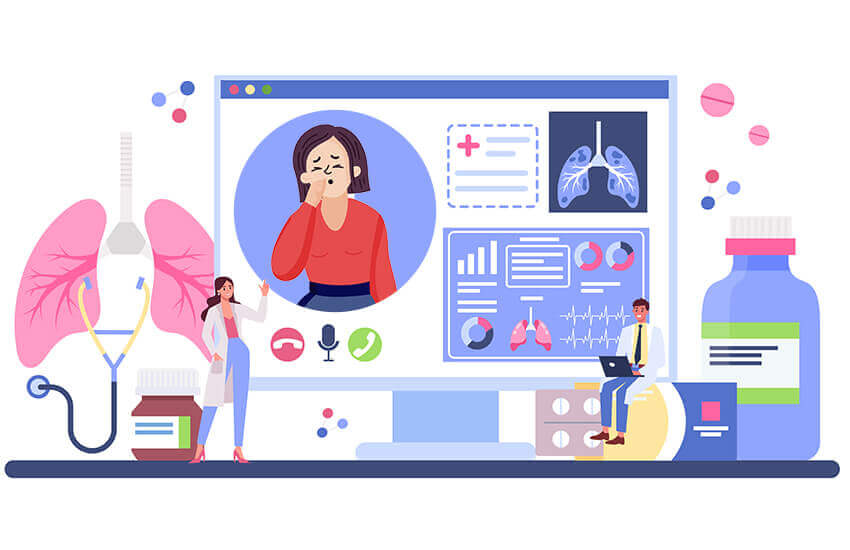
Chronic Obstructive Pulmonary Disease (COPD) is a type of chronic lung disease in which there is an obstruction in the airflow from the lungs. It’s mainly caused by exposure to particulate matter, smoking, and indoor air pollution. The most common symptoms of COPD include wheezing, shortness of breath, tiredness, chronic cough, which may produce sputum, and frequent respiratory infections.
Remote patient monitoring for COPD is an elaborate care plan involving regular patient testing and medications. Patients are given pulse oximeters and ECG (electrocardiogram) to measure respiratory rate. The readings from these devices are taken as a baseline at the beginning of the treatment for reference.
The treatment would consist of medication routines and lifestyle advice applicable to patients suffering from COPD. The patient might also be recommended yogic exercises for breathing that are known to help improve lung capacity. This routine will be carried out per the direction of the team of physicians coordinating care. The patient would be instructed to measure their vitals, like blood oxygen saturation, pulse rate, and ECG. These are then sent to the physicians, who track progress against the initial baseline established before the treatment begins.
Studies have shown that remote patient monitoring for COPD makes treatment more efficient with a better patient experience. This is because the patients can have greater independence to lead their lives while in touch with their doctors. Moreover, remote patient monitoring ensures the treatment is available to more people who would otherwise have difficulty accessing specialist care.
Cancer

Cancer is one of the most serious chronic diseases. It is one of the most difficult diseases to treat and, depending upon the type, has a high mortality rate. Cancer also heavily affects its patients physically, emotionally, and financially. It is responsible for many people and families declaring bankruptcy. Cancer is an extensive process requiring extensive care to help patients rehabilitate and continue their lives.
Remote patient monitoring for cancer patients involves constant communication between them and their doctors. The team of doctors coordinating this could involve oncologists, nutritionists, and others whose specialization would be relevant to care. Studies have shown that patients who opt for remote care are more likely to have better outcomes after treatment.
As mentioned earlier, cancers take a physical toll on their victims. They will likely suffer from weakness, nausea, vomiting, fevers, loss of appetite, and a poor quality of life. These would need a care program curated by a team of doctors coordinating care. The patients would be prescribed medication and a dietary regime to help them lead better lives.
Like other chronic diseases, cancer patients greatly benefit from remote patient monitoring. They can access high-quality care without having to travel to see providers frequently. This is especially beneficial for people living in rural locations without specialists and experts.
Chronic diseases are a major health concern in the United States. They account for the highest portion of healthcare spending in the country and also result in the most fatalities. But remote patient monitoring for chronic care management (RPM CCM) has efficiently handled these ailments. The best part – RPM facilitates effective healthcare management for people who are less likely to be able to access care. In short, it maximizes the impact of chronic care management by increasing access to it. This is a major game-changer in the overall struggle against chronic diseases.
Benefits of Remote Patient Monitoring for Chronic Disease Management
A remote healthcare monitoring system helps physicians observe their patients remotely. It facilitates doctor-patient connectivity without patients visiting a clinic or hospital. This lets people access expert care wherever they are over the internet. This ability to access care has been highly beneficial in the overall struggle to manage the growing crisis of chronic diseases in the country. In this section, we will look at the benefits of RPM for these types of illnesses.
Better Patient Engagement
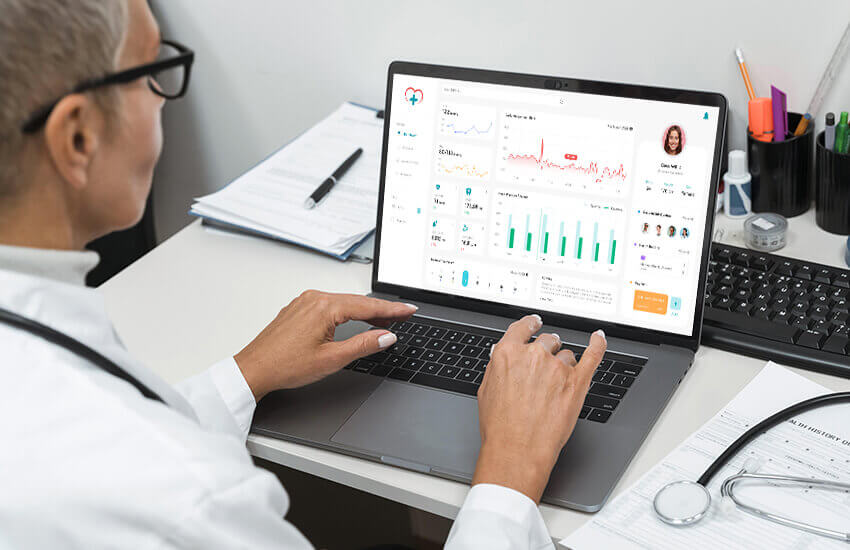
The biggest advantage of using RPM for treating chronic diseases is patient engagement. These diseases cannot be cured through a single course of medication. It requires continuous medication alongside other lifestyle changes. Since patients regularly check in with their doctors through RPM devices, they will always know that their doctors are watching. This prompts them to adhere to their care plan and take treatment more seriously.
Care begins outside a clinic when a patient goes home with their prescription. But unlike conventional care, RPM for chronic care management entails providers constantly checking patient data every few days. This motivates the patient to take better care of themself and do the treatment justice. Moreover, they are more likely to build a rapport with their physicians over time and connect with them for any clarifications. Over time, this results in continuing engagement between doctors and patients.
Lower Hospital Admissions
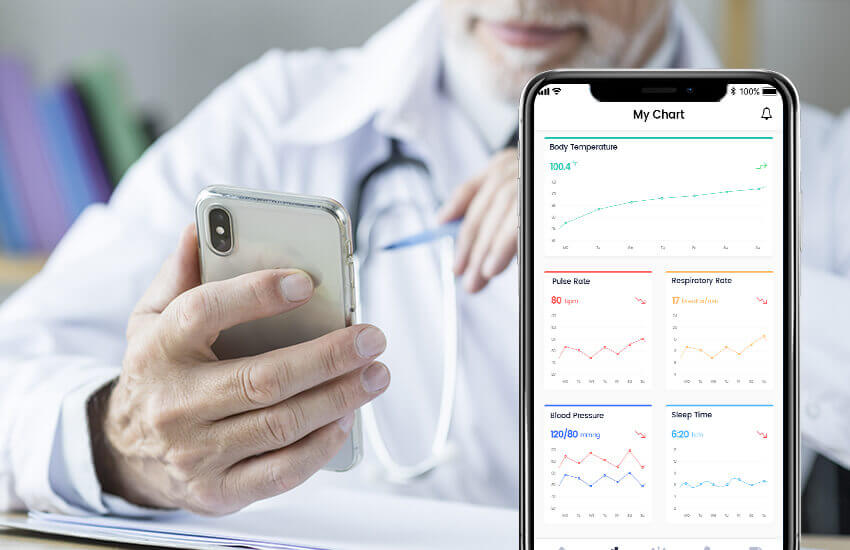
Chronic diseases often result in hospital admissions of varying durations. The diseases’ very nature involves uncertainty, resulting in patient health fluctuations. But in the case of RPM with chronic care, the patients would stick to their plan with complete diligence, and the doctors would constantly monitor patient vitals. This helps them know about any serious changes to the patient’s condition and will alert them in case health worsens before it happens. This enables them to take preventive steps to ensure the patient’s health does not deteriorate beyond a certain point.
RPM allows the provider to observe patients’ health continuously and track any fluctuations from established baselines. This ability goes a long way in helping them to keep patients out of emergency rooms. Admissions and re-admissions from chronic diseases are major sources of spending on healthcare. They are a huge drain on the industry, with providers and public policy experts needing help. But remote patient monitoring solutions help reduce these hospital visits and enable patients to lead better lives.
Enables Faster Modification of Treatments
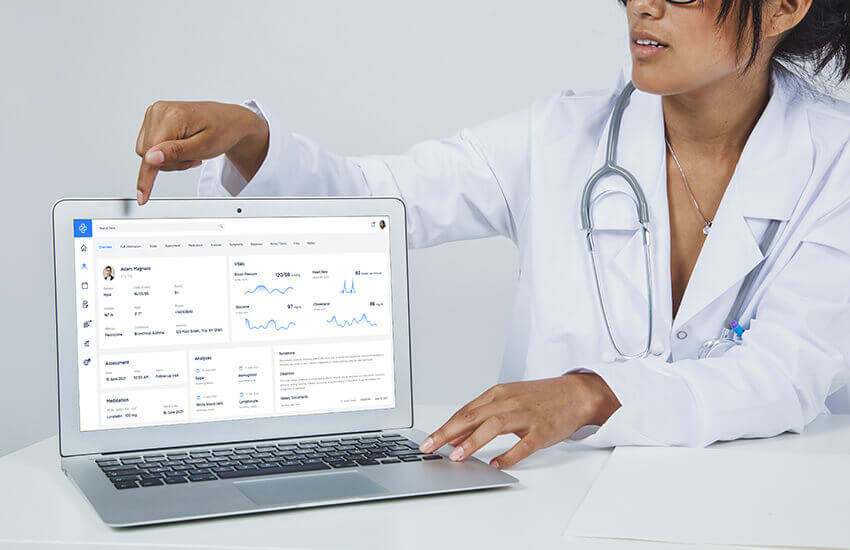
Not all patients respond to treatments the same way. While some are highly responsive, others might not be the same way, and some others might even experience severe side effects. Without RPM, the doctors would prescribe treatment for some time. Subsequently, they would instruct the patient to come back again after a course of medication for follow-ups. During this clinical visit, doctors know how a patient would respond.
However, the trouble with this is that patients’ health might have deteriorated, and modifying the treatment might be a little late. But RPM for chronic diseases helps doctors observe patient health continuously and notice the effects of the treatment. Vital signs regularly paint a reliable picture of the patient’s health situation. If the doctors notice undesirable changes, they can immediately change prescriptions or any other part of the health plan. They could even call the patient for a physical exam if there are warning signs.
Better Access to Care
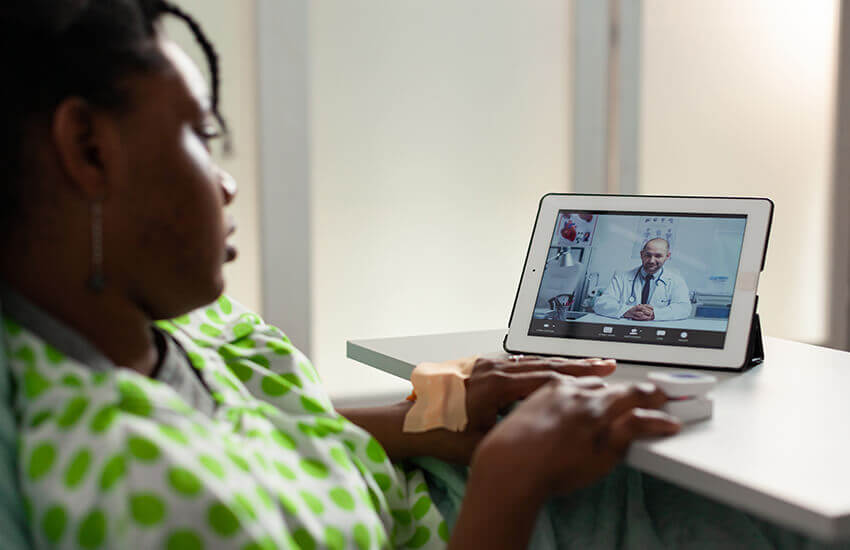
This is the most visible benefit of remote patient monitoring. People can avail of this medical service from the comfort of their homes. As the name indicates, they can connect with physicians remotely using a device and an internet connection. This enables people from distant locations to access care easily without traveling long distances. Moreover, it is especially helpful for people who can’t travel due to physical limitations or transportation problems.
Access to care is determined not only by distance but also by the availability of doctors. As the number of people suffering from chronic diseases grows, there is a shortage of doctors able to provide the required care. But RPM with chronic care is an excellent combination that helps to alleviate the problem of doctor-to-patient ratios.
A single team of chronic care providers can supervise the care program of several patients, each of whom might be situated at a different location. Needless to point out, this allows more people to access the care they need and improve their health. Greater access to care invariably leads to better management of chronic diseases.
Improved Patient Outcomes
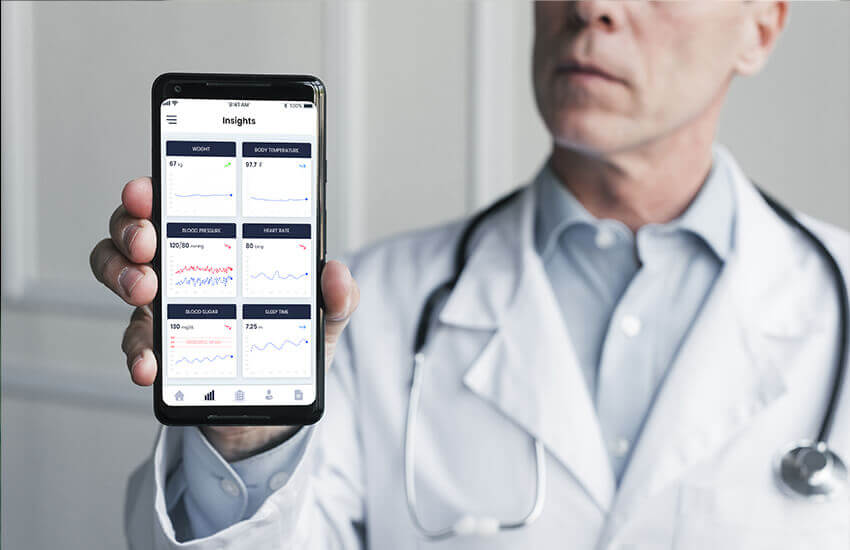
As mentioned earlier, chronic diseases cannot be cured; they can only be managed. The better the management, the healthier the life for patients. But the conventional way of routine clinical visits has proved less efficient regarding the long-term management of chronic conditions. In this, the patients would go to a doctor, get a prescription, take their meds, listen to their doctor, and report for their follow-ups, although not regularly.
But with RPM, the care comes to their doorstep. Patients can stay connected with a team of coordinating providers at all times. The doctors would be continuously aware of their patient’s vitals, prompting them to adhere to their treatment more seriously.
Common Devices Used For RPM
As mentioned earlier, remote patient monitoring entails the clinical observation of patients outside of traditional clinical settings. So, it is obvious that specialized devices used for RPM measure patients’ vitals and share them with providers in real time. Explore some and see how they help providers and patients manage diseases.
Glucometer
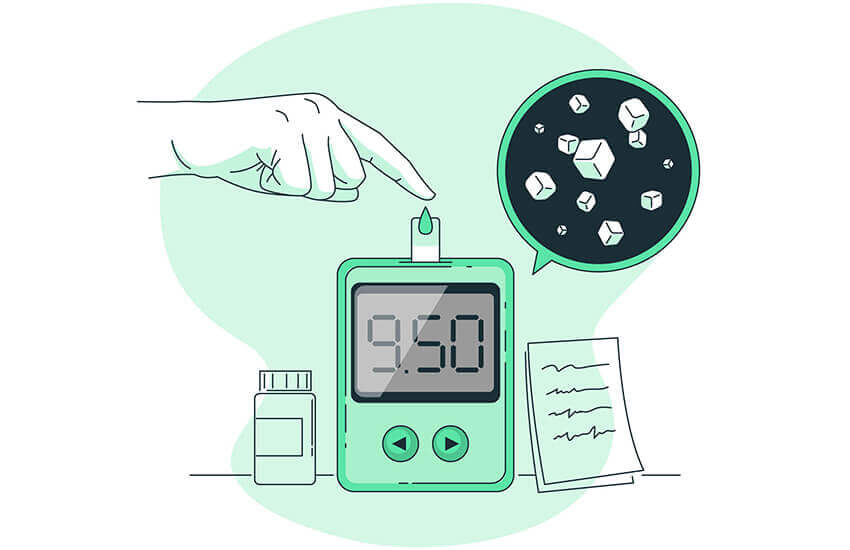
A glucometer is an extremely useful tool for people with diabetes to keep track of their blood sugar levels. It consists of a device with a front display showing the current blood sugar. Users place a small droplet of their blood on a test strip that is included with the device and insert it into the glucometer. The device takes a few seconds and shows the existing sugar levels in the blood. Additionally, this information is shared with the team of physicians in real time.
Patients use glucometers to track the rise and fall in their blood sugar levels after each meal and exercise multiple times daily. This helps them and their doctors monitor the factors responsible for increasing or decreasing blood sugar levels. Patients can find out which foods or activities makes their sugar levels rise. They can accordingly plan their diet with the help of the physicians managing the care. Such an insight-driven approach to diabetes care goes a long way in helping to manage the condition.
Pulse Oximeter
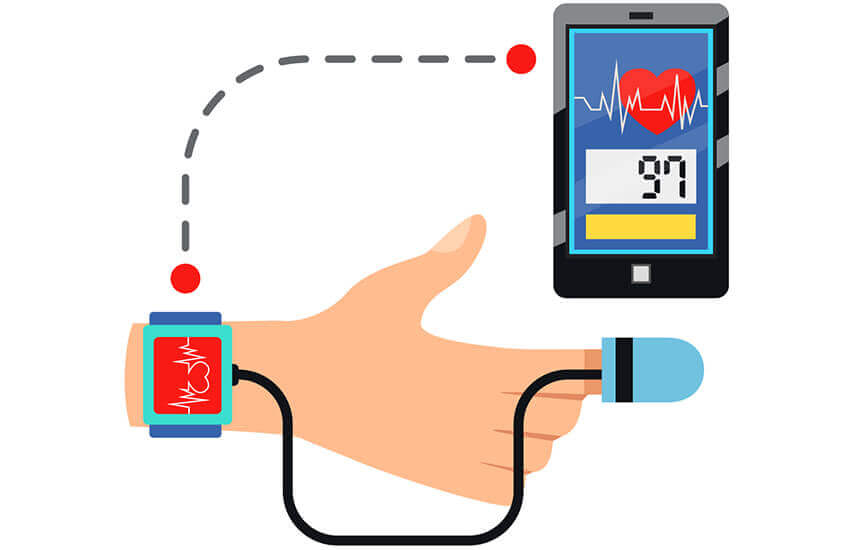
A pulse oximeter is a type of clip that is attached to a patient’s fingertip or earlobe. It uses a specific technology to measure the oxygen level in a patient’s red blood cells. It also measures the patient’s pulse. This device is mainly used by patients suffering from chronic heart or lung diseases like chronic obstructive pulmonary disease (COPD), asthma, and pneumonia. Additionally, millions used them across the globe during the Covid-19 pandemic as a home-based diagnostic tool.
The vitals measured by pulse oximeters are shared with providers who can track the changes over some time. This provides insights into patients’ health and enables doctors to track the effect of ongoing treatments. Low blood oxygen was considered a positive diagnosis during the Covid-19 pandemic. It prevents hospital admissions or patient re-admissions through continuous remote observation and timely intervention.
Blood Pressure Cuff
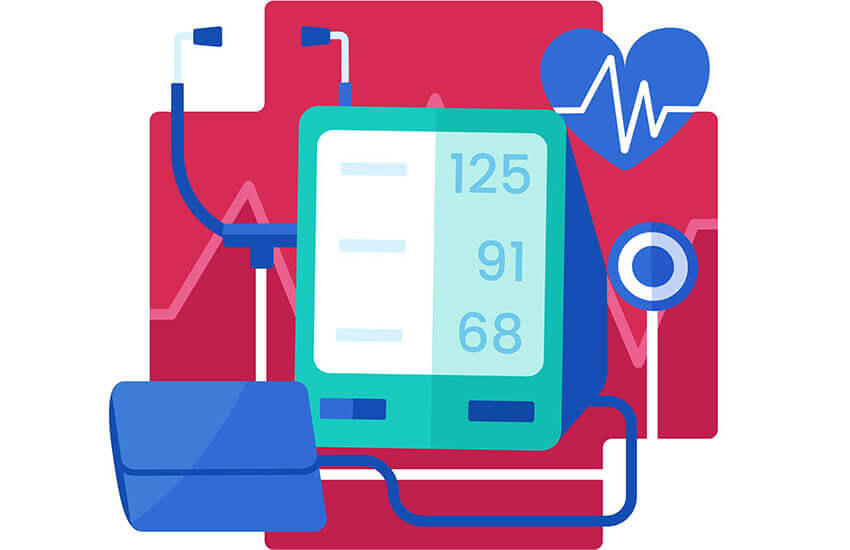
As the name indicates, a blood pressure cuff measures a patient’s blood pressure. They calculate heart rate and blood flow by detecting changes in artery motion. A blood pressure cuff takes blood pressure readings and sends them in real-time to doctors for review. Being a home-based RPM device, it is an excellent tool for tracking hypertension.
Most people suffering from hypertension go to a clinic and have their readings taken. However, this process is prone to inconsistencies since the patients’ blood pressure may vary depending on the time of day and the environment. For example, a person may have clear hypertension at the office but not as clear while at home or on vacation. This problem may lead to a misdiagnosis which would, in turn, lead to ineffective treatments.
But a blood pressure cuff helps people measure their vital signs multiple times daily and helps doctors monitor their condition better. It helps to eliminate any ambiguities caused by fluctuating readings in differing environments. This improves the accuracy of the diagnosis, leading to better patient outcomes.
Wearables
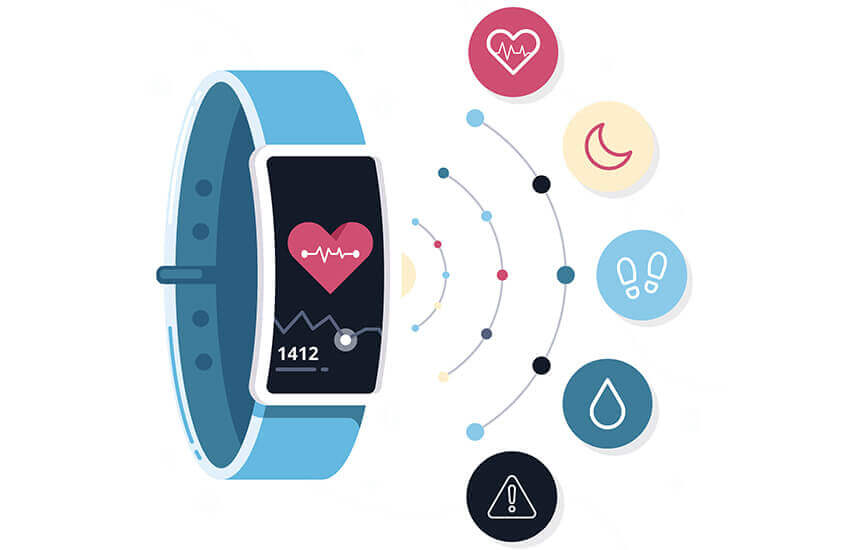
These IoT-powered wearable gadgets or garments track their wearer’s physical activity, heart rate, sleep, fall risk, etc. Some of the most common examples include Apple’s Smartwatch and Fitbit. These gadgets generate relevant patient vitals data and share them continuously with providers. The biggest advantage of these devices is that they generate a continuous stream of health data, which helps providers better understand the patients’ conditions.
These have many applications in chronic care management and care for aging seniors. IoT-powered wearables are considered the next generation in RPM technology as they don’t require a lot in the way of lifestyle changes. Patients can wear them as they go about their daily routines.
The medical data that wearables generate are also being considered for use in automated healthcare solutions like analysis, alerts, and so on.
ECG + Stethoscope
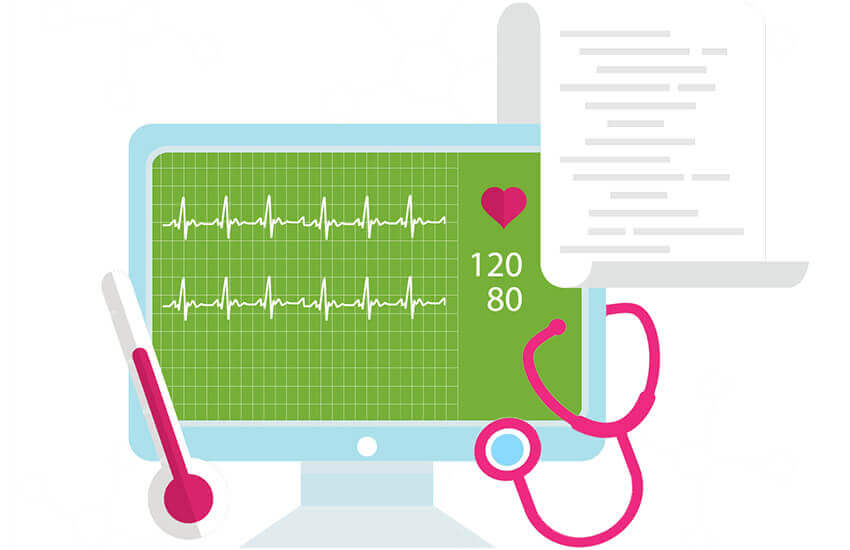
An ECG or electrocardiogram records heart rhythms while a stethoscope amplifies sound. The former helps with cardiac conditions, while the latter enables physicians to hear heart and lung sounds. Patients can use a dedicated device that combines the functions of an ECG and a stethoscope and obtain readings on the vitals. These are then shared with providers who assess them and offer care services virtually.
This device is especially helpful for people with heart conditions and pulmonary diseases and seniors living at assisted living facilities.
Bluetooth Thermometer

As the name indicates, this thermometer measures a person’s body temperature and sends it to providers. Unlike an ordinary thermometer, a Bluetooth-connected one makes it easy to share the temperature with providers remotely. Non-touch version scans the person’s forehead and accurately records the body’s temperature. Fevers are an indicator for any number of diseases, and non-contact body temperature scanners played a role in public safety during the Covid-19 pandemic.
Bluetooth Scale

These are weighing scales to measure body weight. But the difference is in connectivity. As the name indicates, Bluetooth scales share data with providers. This device is helpful for patients struggling with obesity and enables them to check their weight and share it with providers regularly.
Role of RPM in the Future of CCM
Repeated research and studies have shown that remote patient monitoring for preventive care is highly effective in managing chronic diseases. Data suggests it might be better than the conventional way of handling these diseases. In this section, we will talk about the role of RPM in chronic diseases and its future.
The problem with Chronic Disease Management Chronic diseases can only be managed, not cured. Although much money has been poured into research and great strides made, a cure remains elusive. They are responsible for the majority of healthcare spending in the United States. Additionally, people suffering from chronic diseases also suffer from lowered work productivity which costs hundreds of billions to the economy. Since more than 130 million Americans are known to suffer from at least one chronic condition, it is not an exaggeration to say that this is a major medical crisis gripping the country.
Chronic disease management is not just about taking the right medications at the right time or exercising regularly. It has many factors within it. Without RPM, people with these conditions would go to a doctor, get tested, pick up their prescriptions, listen to their doctor, and go about their lives. Many of them don’t show up for follow-up consultations, don’t stick to diets, remain irregular with their medications, and generally procrastinate when they should approach this with a war footing.
The medical care and disease management process begins when the patients leave the doctor’s office. The doctor offers advice along with the medication, which is up to the patient. This approach to handling chronic diseases is inefficient since many patients either don’t take their doctors’ advice seriously or lack knowledge about healthy lifestyles. Either way, periodic in-person visits need to do more to check the increasing numbers of chronic diseases.
Recognition of RPM
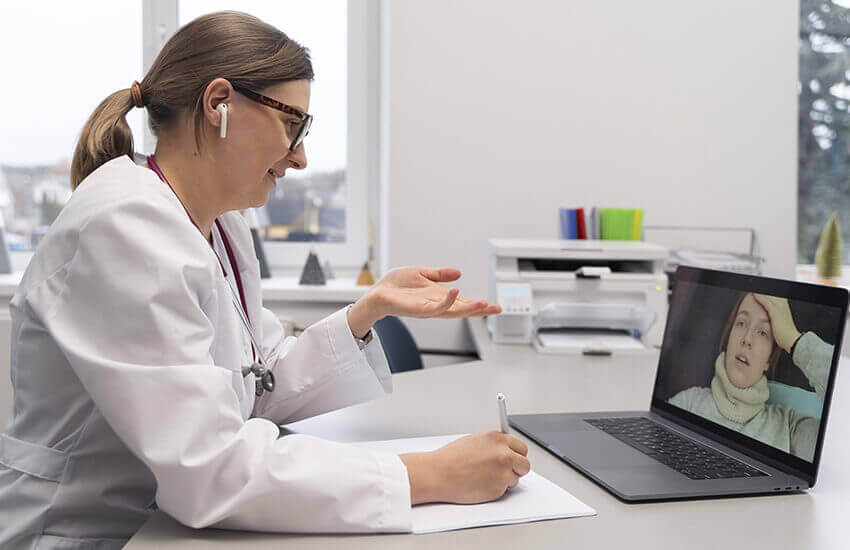
In light of this inefficiency, a combination of remote patient monitoring and chronic care management has shown to be a better alternative. Remote patient monitoring, or RPM, began as a novel idea. It was only discussed in academic circles but never considered for implementation. But the Covid-19 pandemic changed all that. As entire countries entered lockdowns and travel restrictions were imposed, RPM offered a means for doctors and patients to connect. This was at a time when waiting rooms at hospitals and clinics became hotspots of infection.
Both people and clinicians turned to RPM solutions for care. This was when all stakeholders in healthcare realized the importance of a remote patient monitoring system. It took a little while for providers and researchers to realize the potential of this technology in chronic care. Diseases like diabetes, cancer, kidney disease, heart disease, and hypertension require continuous medical observation. However, keeping patients under clinical observation for months is impossible. This was when taking one’s health readings and sharing them in real-time with providers took off.
RPM For Chronic Care Management
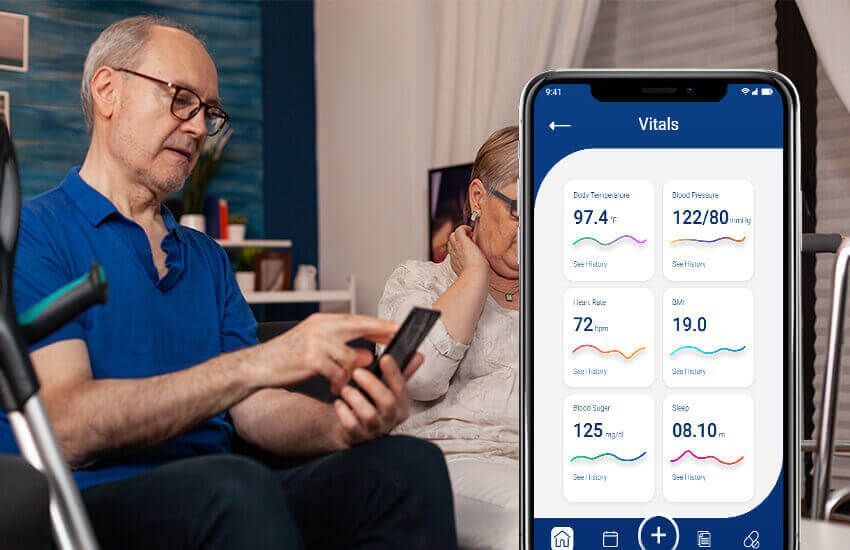
Managing chronic diseases is a continuous process that happens every day and could happen more than once daily. Patients in an RPM-based chronic care program would measure their vitals daily. This data would be shared with providers who observe the patients’ health remotely and chart it over some time. As a result, they can identify how their patients respond to the treatment. The fact that their vitals will be shared regularly with providers pushes people to take their care much more seriously than they would otherwise have.
Knowing they need to update their physicians daily motivates people to take their meds, follow strict diets, exercise, and abstain from alcohol, smoking, and other harmful activities. Additionally, since they can call and ask their providers anything without booking appointments, it builds a doctor-patient rapport. Measuring their vitals continuously makes people more aware of their part in the care program. Simply put, people will be more immersed in caring for themselves.
The best part of RPM in chronic care is its access to people who need to be more fortunate to live in urban locations. Such people need to travel for their care which would increase the cost and add stress. But with RPM devices, they can visit their providers once a month or so and stay connected remotely whole, sharing their health data routinely. This lets more people enroll in chronic care management programs and stick to them. In other words, RPM improves access to care programs for everyone, irrespective of location. The lack of the necessity to visit doctors as often and take tests at clinics also goes a long way in reducing the overall cost of treating chronic diseases.
To sum it up, remote patient monitoring solutions paved the way for a more efficient way of dealing with chronic diseases. They improve the care quality and the outcomes at a comparatively lower cost. In short, it is a win-win for providers, patients, and payers. RPM for chronic diseases is here to stay, and its role in the future will only grow as more people are touted to need it. Healthcare technology companies are bullish on RPM technologies and continue to pour more money into innovating better ways to deliver care remotely.
Conclusion
As newer technologies like artificial intelligence arrive, the role of remote care will only increase in the medical industry. Amid this, remote patient monitoring is seen as a solution to many challenges plaguing healthcare in the United States – rising costs, lack of access, and increasing chronic diseases. The end of this decade is sure to see a comprehensive shift in policy towards increasing the role of RPM in healthcare.
Reference:
- https://www.ruralhealthinfo.org/care-management/chronic-care-management
- https://www.quatrishealthco.com/what-is-chronic-care-management/
- https://www.altexsoft.com/blog/remote-patient-monitoring-systems/
- https://www.sequencehealth.com/blog/emr-vs-ccm-the-differences-between-remote-patient-monitoring-and-chronic-care-management
- https://healthsnap.io/rpm-vs-ccm-vs-rtm-and-other-care-management-services/
- https://aetonix.com/telehealth-remote-patient-monitoring/differencebetweenrpmandccm/
- https://drkumo.com/comparing-rpm-and-ccm/
- https://mtelehealth.com/4-chronic-care-use-cases-for-remote-patient-monitoring/
- https://mhealthintelligence.com/features/4-chronic-care-use-cases-for-remote-patient-monitoring
- https://tenovi.com/remote-patient-monitoring-chronic-disease-management/
- https://www.coachcare.com/2021/10/30/top-4-benefits-of-using-remote-patient-monitoring-for-chronic-care-management.html
- https://www.healthrecoverysolutions.com/blog/7-common-remote-patient-monitoring-devices
- https://validic.com/why-remote-patient-monitoring-is-needed-for-the-future-of-chronic-care-management/
OSP is a trusted software development company that delivers bespoke solutions as per your business needs. Connect with us to hire the best talents in the industry to build enterprise-grade software.

How can we help?
Fill out the short form below or call us at (888) 846-5382
Looking for software solutions to build your product?
Let's discuss your software solutions for your product in our free development acceleration call!
Get In Touch arrow_forwardDiscuss Your Project Handover with a team of expert Book a free consultation arrow_forward
About Author

Written by Riken Shah linkedin
Riken's work motto is to help healthcare providers use technological advancements to make healthcare easily accessible to all stakeholders, from providers to patients. Under his leadership and guidance, OSP Labs has successfully developed over 600 customized software solutions for 200+ healthcare clients across continents.







